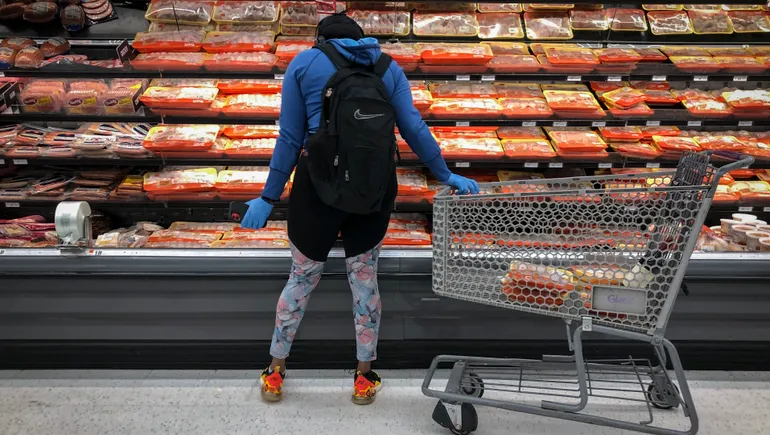Tyson Foods posts mixed earnings as chicken shows momentum

Dive Brief:
-
As sales stagnated over last year, Tyson Foods improved operating income to $312 million in the second quarter, driven by recovery efforts in its chicken operations as consumers pulled back on food spending.
-
Sales totaled $13 billion, unchanged from last year. Meanwhile, operating income for chicken soared to $158 million as processing efficiencies improved following the closure of six plants. These tailwinds offset headwinds from beef and pork and built on solid income from Jimmy Dean, Hillshire Farms and other prepared foods items.
-
Despite improvements in parts of the company, John R. Tyson, executive vice president and chief financial officer, signaled a cautious third-quarter outlook to investors, with uncertainties around consumer behavior, the cattle cycle and commodity costs.
Dive Insight:
Although inflation is pushing some consumers to rethink purchases, the trend could benefit Tyson as shoppers focus more on staples and less on snacks or other discretionary purchases, according to Melanie Boulden, Tyson’s group president of prepared foods and chief growth officer.
“The inflation impact coupled with historically low savings rates has created a more cautious, price-sensitive consumer, and we’re also seeing a cautious consumer prioritize essential staples over discretionary categories,” Boulden said.
Because of Tyson’s massive scale and variety of products, John R. Tyson said “We’re in a pretty good position to win no matter where consumers are shopping.”
“We see the rest of the year as being fairly balanced, but just with all of the various factors at play and some seasonality in pork especially – there could be a tweak there,” Tyson said.
After three years of cumulative inflation, consumers are fed up with higher costs for food and everyday expenses and becoming more selective about where and how they spend their money.
This is causing some retail and food service slippage as consumers choose private-label over premium brands and enjoy more meals from home instead of dining out. The company is focusing its efforts to expand offerings in seasoned and marinated meats to provide shoppers with more “convenient restaurant-quality food options at home,” CEO Donnie King said on an earnings call.
As second-quarter sales stagnated over last year, operating income improved to $312 million, driven by recovery efforts in Tyson’s chicken segment.
Although the company continues to struggle with high mortality and genetics issues in chicken, King said operations are running well and more efficiently amid lower global grain costs.
Tyson recently shuttered the last of its six chicken processing plants announced for closure last year, along with two case-ready beef facilities to cut costs and reallocate resources. The company is also in the process of closing one of its pork plants in Iowa.
“Together, we delivered a solid first half. We still have more work to do and believe we have the strategy in place to continue our progress and deliver long term shareholder value,” King said in an earnings call.
Still, the company expects third-quarter results could be weaker than the fourth quarter.
“Historically Q3 has performed better than Q4, but we’re seeing higher commodity costs in Q3,” Boulden said.
After releasing its second-quarter earnings, Tyson’s shares closed Monday at $58.50, down 6% from Friday on the New York Stock Exchange. They fell more than 9% in morning trading.
Source: fooddive.com

